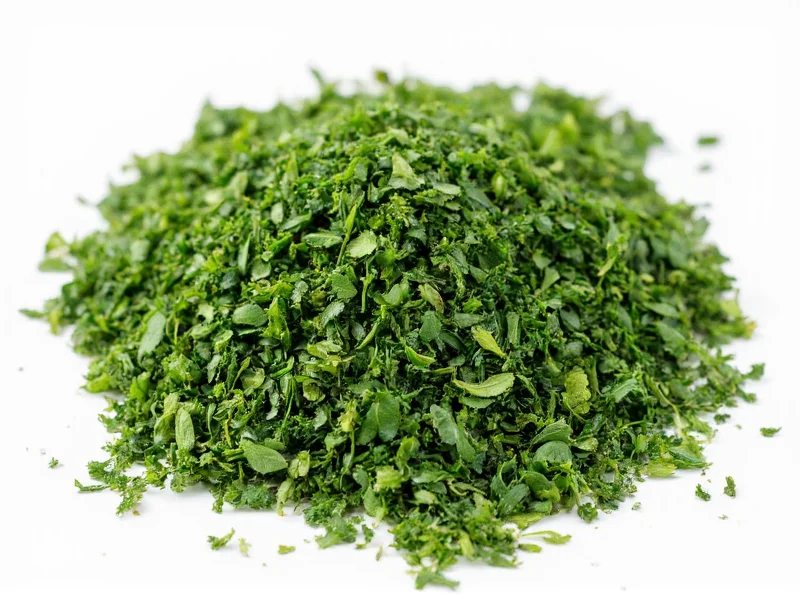Understanding herb conversions is essential for consistent cooking results. When substituting dried parsley for fresh in recipes, you'll need less dried herb to achieve similar flavor intensity. This conversion principle applies to most dried herbs versus their fresh counterparts, though parsley follows the standard 1:3 ratio precisely due to its moderate essential oil content.
Why the 1:3 Conversion Ratio Works
Dehydration removes approximately 90% of fresh parsley's water content, concentrating its flavor compounds. Fresh parsley contains volatile oils that provide its distinctive taste and aroma. When dried, these compounds become more concentrated in the remaining plant material.
The 1:3 ratio accounts for this concentration effect. Using equal amounts would result in overpowering, potentially bitter flavors when substituting dried for fresh. Conversely, using too little dried parsley would yield under-seasoned dishes.
Precise Dried Parsley to Fresh Parsley Conversion Chart
| Dried Parsley | Fresh Parsley Equivalent | Common Recipe Measurement |
|---|---|---|
| ¼ teaspoon | ¾ teaspoon | Small side dishes |
| ½ teaspoon | 1½ teaspoons | Sauces and dressings |
| 1 teaspoon | 1 tablespoon | Standard recipe measurement |
| 1 tablespoon | 3 tablespoons (¼ cup) | Larger dishes, soups |
| 2 tablespoons | 6 tablespoons (¼ cup) | Family-sized recipes |
When Substitution Works Best
Dried parsley performs well in cooked dishes where extended heating would diminish fresh parsley's delicate flavor. Consider these applications:
- Long-simmering soups and stews (add dried parsley early to allow flavor development)
- Meatloaf and meatball mixtures (dried integrates better with other dry ingredients)
- Dry spice rubs for proteins
- Bread doughs and savory baked goods
Fresh parsley shines in applications where its bright flavor and visual appeal matter most:
- Finishing dishes (sprinkled on just before serving)
- Fresh sauces like chimichurri or gremolata
- Salads and cold preparations
- Garnishes where color contrast enhances presentation
Avoiding Common Conversion Mistakes
Cooks often make these errors when substituting dried for fresh parsley:
Over-substitution: Using equal amounts instead of adjusting for concentration. This creates overpowering, sometimes bitter flavors. Always remember the 1:3 ratio.
Incorrect timing: Adding dried parsley too late in cooking prevents proper flavor integration. For best results, add dried herbs early in the cooking process.
Ignoring quality factors: Older dried herbs lose potency. Test your dried parsley by rubbing a small amount between fingers—if the aroma is weak, you may need slightly more than the standard ratio.
Texture misunderstanding: Dried parsley won't provide the same visual appeal as fresh. Reserve fresh parsley for garnishes where appearance matters.
Maximizing Flavor with Either Form
To get the most from dried parsley, store it in an airtight container away from light and heat. Properly stored, it maintains good flavor for 1-2 years. Before using, rub between your fingers to release essential oils.
Fresh parsley should be stored with stems in water (like flowers) in the refrigerator, covered with a plastic bag. Use within 1-2 weeks for best flavor. Always wash thoroughly and dry before chopping.
For dishes requiring both forms, consider using dried parsley in the cooking process and fresh as a finishing garnish—this provides layered flavor complexity.
Special Considerations for Different Recipes
Certain dishes require nuanced substitution approaches:
Cooking delicate fish: Stick with fresh parsley to avoid overpowering mild flavors. If substituting dried, use only half the standard ratio.
Tomato-based sauces: Dried parsley works well here as the acidity helps extract flavor from dried herbs. Use the full 1:3 ratio.
Egg dishes: For omelets or frittatas, fresh parsley provides better texture and visual appeal. If substituting dried, reduce to 1:4 ratio to prevent bitterness.
Potato salads: Fresh parsley is preferable, but if using dried, add it to the warm potatoes with dressing to help rehydrate and distribute flavor.











 浙公网安备
33010002000092号
浙公网安备
33010002000092号 浙B2-20120091-4
浙B2-20120091-4